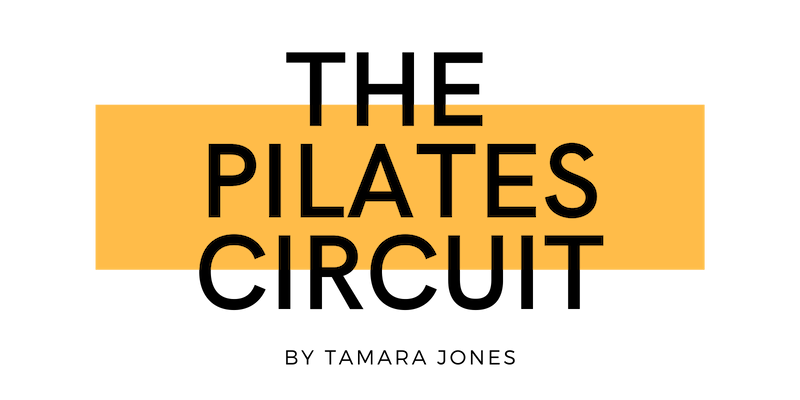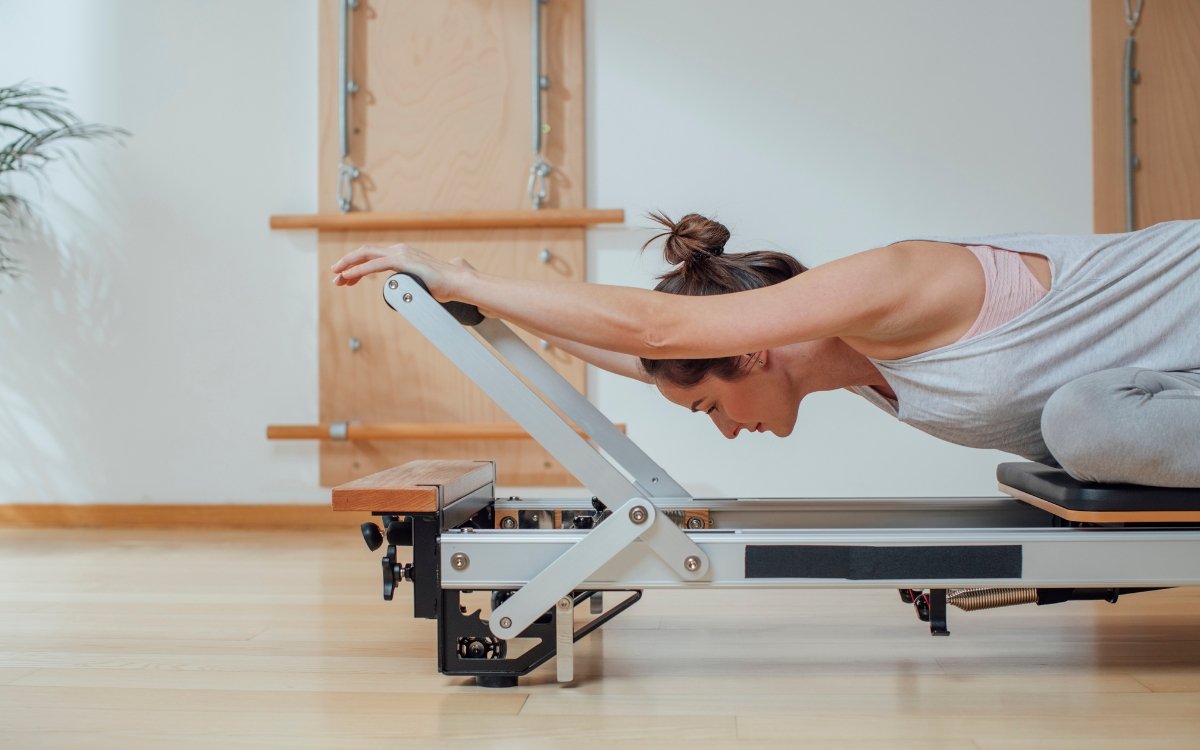Pilates for Beginners: How To Get Started With Pilates
Starting a new fitness routine can be daunting. Pilates for beginners offers a friendly gateway into fitness. This blog will guide you through the basics and into your first class.
In this guide, you will discover how to get started with Pilates and explore its many benefits.
What Is Pilates?
Pilates is a system of exercises designed to improve physical strength, flexibility, and posture.
It focuses on core strength, proper alignment, and breathing techniques to promote overall health and well-being.
What Kind Of Exercise Does Pilates Entail?
Pilates exercises use specialized equipment such as the Reformer, Chair, and resistance bands. They emphasize precise alignment, proper breathing techniques, and fluid transitions between movements.
Pilates routines may incorporate leg circles, planks, bridges, and spine stretches to improve posture, balance, and overall body awareness.
The Physical & Mental Benefits of Pilates
Pilates promotes relaxation and stress reduction with mindful movement and controlled breathing.
Basic Pilates Principles for Beginners
The fundamental principles of Pilates include concentration, control, centering, precision, breath, and flow. Focusing on the body’s core in Pilates forms the foundation for all movements.
Core Pilates Principles Explained
Concentration demands focused attention on each movement and its alignment.
Control emphasizes the quality of movement over quantity.
Centering refers to engaging the core muscles, particularly the abdominals.
Precision involves executing exercises with accuracy and attention to detail.
Diaphragmatic breathing facilitates movement and enhances body awareness.
Flow encourages smooth, continuous transitions between exercises for fluidity.
Incorporating Mindfulness and Breathing Techniques
Staying present and focused during each movement enhances the mind-body connection and maximizes the benefits of your workout. Deep, controlled breathing oxygenates the muscles and promotes relaxation.
Preparing for Your First Pilates Class
A Pilates for beginners class will usually last for an hour and focus on basic exercises and principles, proper form, and technique. Being mindful of common Pilates mistakes, such as holding your breath or tensing the neck and shoulders, can help you get the most out of your session and avoid discomfort.
Wear comfortable, form-fitting clothes, and bring a water bottle to stay hydrated.
What to Expect in a Pilates Class for Beginners
In a beginner’s Pilates class expect to learn foundational exercises like the Hundred, Roll-Up, and Single Leg Stretch.
The instructor will guide you and provide modifications and adjustments to accommodate your individual needs and abilities.
Essential Gear for Your First Session
A good quality mat can provide comfort and support. Some classes may incorporate resistance bands, balls, or the Pilates ring.
A Quick Guide To The Different Types Of Pilates
There are several different styles Pilates from traditional mat Pilates to contemporary reformer classes:
Classical Pilates - emphasizes precise movements performed on specialized equipment like the reformer and Cadillac to build core strength, flexibility, and balance.
Contemporary Pilates - uses props like stability balls and resistance bands, offering a more diverse range of exercises.
Clinical Pilates - prescribed by healthcare professionals with a focus on therapeutic exercises to rehabilitate injuries or manage chronic conditions.
Fusion Pilates - combines Pilates with disciplines like yoga or dance.
Choosing the Right Pilates Class
Consider your fitness level, goals, and personal preferences. Beginners can find a Pilates class that’s right for them, whether they prefer a group class or one-on-one instruction.
Is Pilates Hard for Beginners?
Pilates is adaptable to individual needs and abilities. With consistent practice, you’ll gradually build strength, flexibility and confidence.
Is Reformer Pilates Good for Beginners?
Reformer Pilates utilizes specialized equipment to provide resistance and support. Work with a qualified instructor to ensure proper form and technique.
What Is The Best Way to Learn Pilates?
The best way to learn Pilates is through guided instruction from a certified instructor. Working with a knowledgeable teacher helps you develop proper techniques and avoid injury.
Many students also explore Pilates books to deepen their understanding of the method and support their practice between sessions. Online classes and self-guided routines can also be useful when paired with occasional expert feedback.
How Often Should Beginners Practice Pilates?
Aim to practice two to three times per week to see noticeable improvements in strength, flexibility, and overall fitness.
The Importance Of Setting Realistic Goals and Expectations
As a beginner new to Pilates, progress may be gradual. Yet you’ll achieve results that exceed your expectations with patience and persistence.
Closing Thoughts: Embarking on Your Pilates Journey
Beginning your Pilates journey is an opportunity to transform your body and mind from the inside out. Whether you are looking to improve your physical fitness, relieve stress, or try something new, take the first step today.
Achieve strength and balance with private Pilates in NY. Our one-on-one sessions are designed to fit your goals, whether you’re aiming to improve posture, gain flexibility, or build core strength.
Book an intro session today to get started with a customized plan from our expert instructors. With locations at the Chelsea Private Pilates Studio and NOMAD Pilates Studio, we’re here to support you in a private and welcoming setting.
FAQs
-
Yes, Pilates is suitable for beginners and can be adapted to accommodate individuals with injuries or physical limitations. Pilates exercises can be modified to suit different fitness levels and abilities, allowing beginners to progress at their own pace and individuals with injuries to participate safely.
A qualified instructor can provide guidance on appropriate modifications and ensure exercises are performed with proper form and technique to minimize the risk of exacerbating injuries.
The beauty of Pilates is how customizable it can be. As long as you’ve been cleared to work out by your Dr or Physical Therapist Pilates is the perfect next step.
-
While the Pilates Reformer may seem intimidating to beginners, it can be quite beneficial for Pilates newcomers. The Reformer provides support and assistance in performing exercises, making it easier to maintain proper alignment and form. The adjustable resistance of the springs also allows beginners to gradually increase intensity as they build strength and confidence.
With proper guidance from a qualified instructor, beginners can safely and effectively use the Pilates Reformer to improve core strength, flexibility, and overall body awareness.
We may be a little biased, but it’s also a ton of fun. It provides some great resistance (weight training), and you'll really see progress on the machine. As you develop, your repertoire will expand on the Reformer, which becomes even more fun.
-
Wear comfortable, form-fitting clothing that allows for ease of movement! You should avoid loose or baggy attire that may get caught in equipment. Pilates socks with grip bottoms or bare feet are also recommended to provide traction and stability during exercises.
Feel free to bring your own water bottle, but towels and water cups will be provided.
-
Private Pilates training offers personalized attention, customized workouts, and the ability to progress at your own pace.
With a private instructor, you receive individualized instruction tailored to your body's needs and goals, allowing for a more effective and efficient workout. Private sessions also provide a focused environment where you can address specific areas of concern, such as injury rehabilitation.
Group classes focus on choreography and keeping the entire group moving. If you’re after more, private pilates will be personalized to you.
Meet Tamara – Your Pilates Expert
Hi! I’m Tamara, a Certified Pilates Instructor and founder of The Pilates Circuit in NYC. With 9+ years of experience, I specialize in results-driven, athletic Pilates to improve posture, core strength, and overall wellness. Whether you're recovering from diastasis recti or leveling up your fitness, I’m here to guide you every step of the way!
Find us on Instagram:



